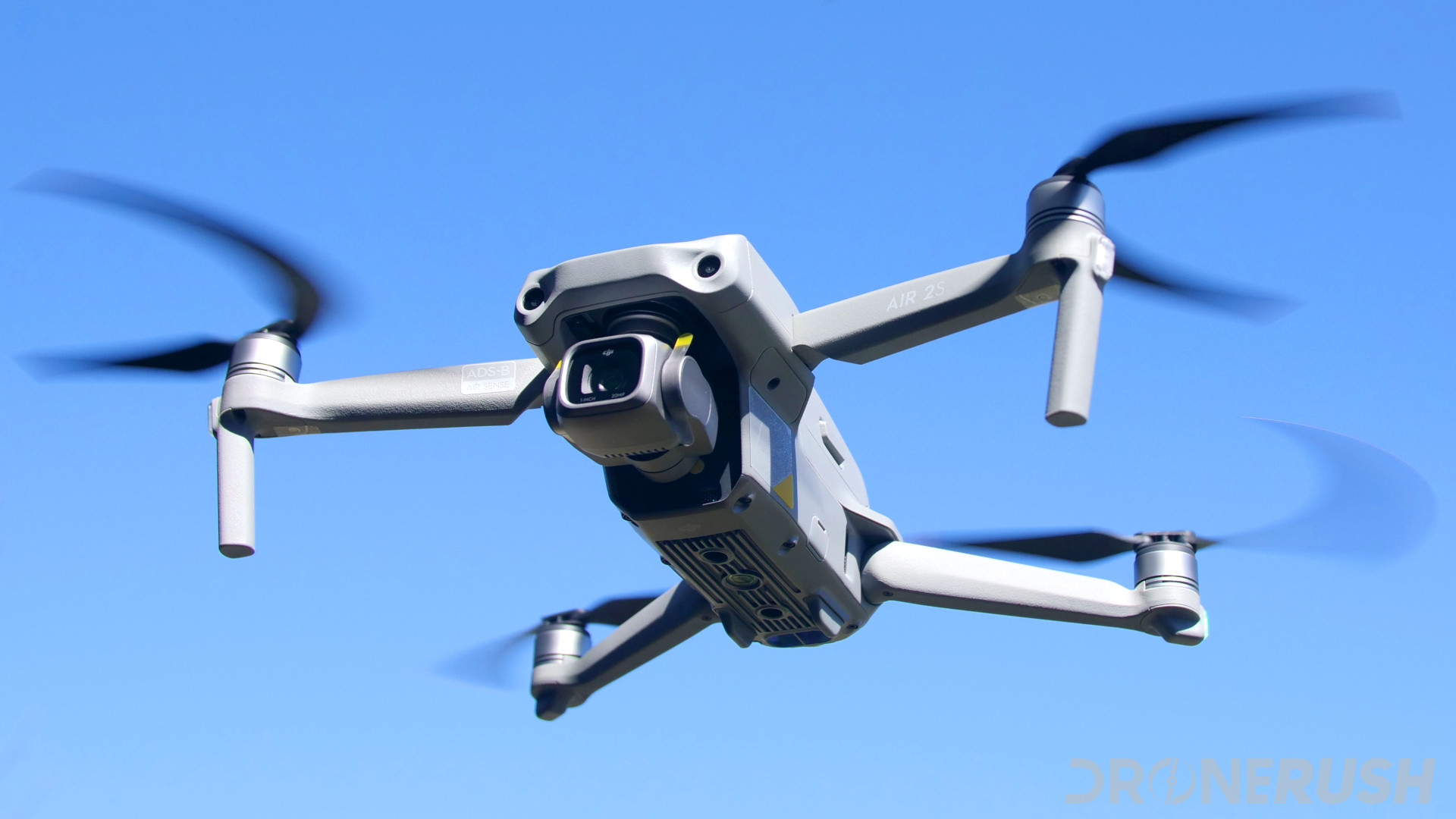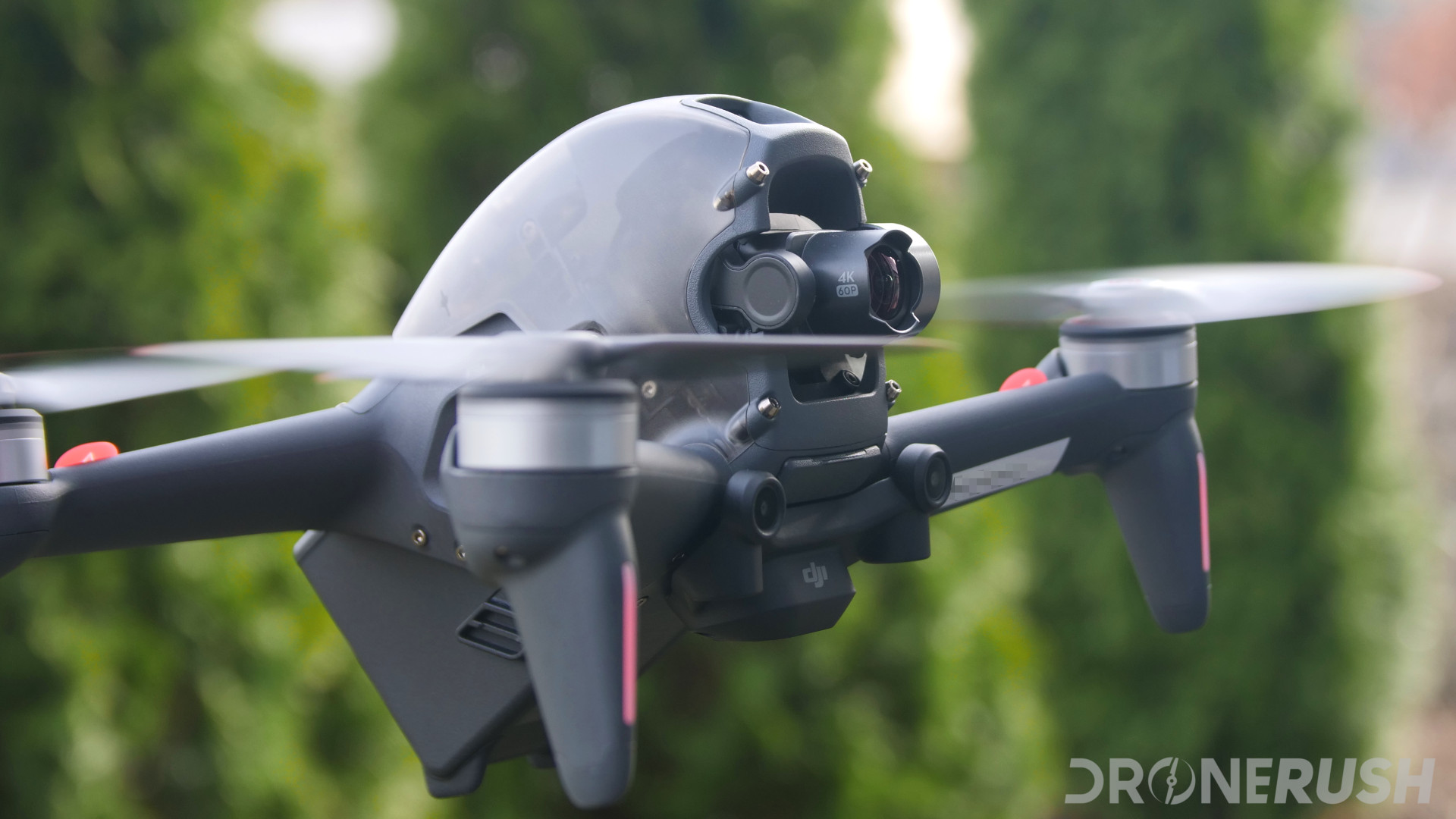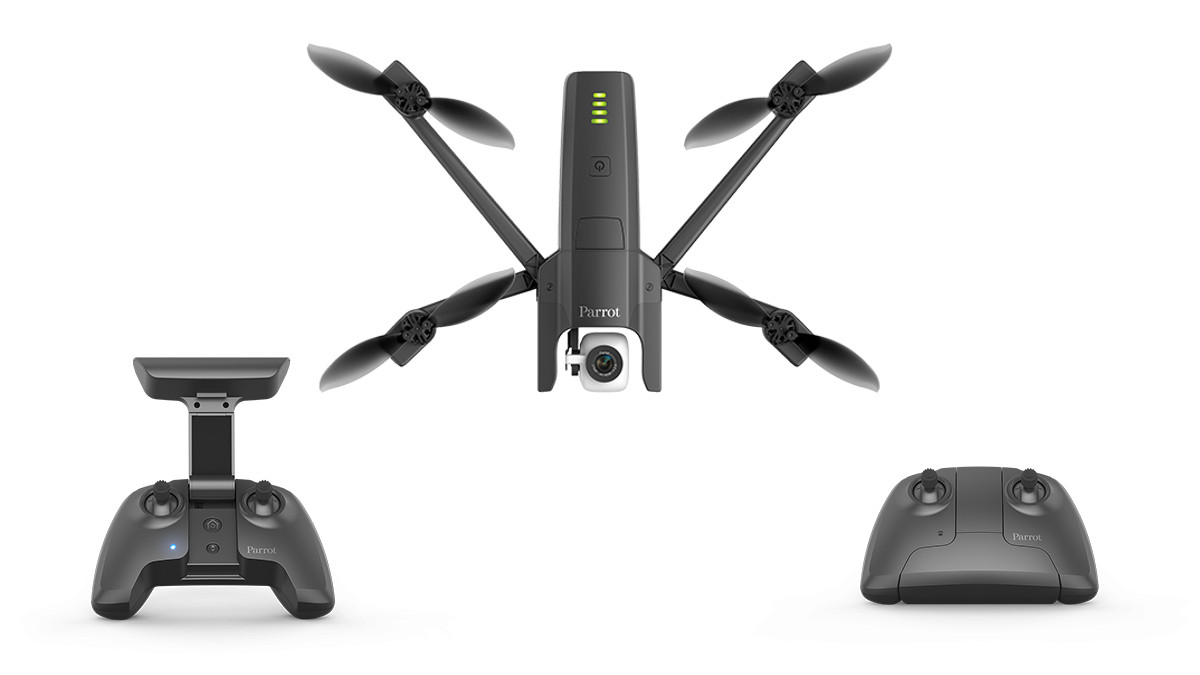
We have a theory, if a drone cannot land safely, it has no business flying. Assuming your drone does fly safely, you can manually manage the flight and landing, or you can utilize a built-in feature for many machines, RTH. Just what is RTH? Simple enough, RTH stands for Return to Home.
RTH is an automated flight feature that sounds simple enough, but there is more to it than just hitting a button, let’s talk about the capabilities of RTH on your favorite drone to help you land safely.
Know the law! While RTH is a fantastic automated flight feature, taking your hands off of the sticks does not mean you can take your eyes off of your drone.
Why trust Drone Rush?
I’ve been a fan of flight since a young age; while I’ve had few opportunities at the helm of manned aircraft, the hours on my fleet of drones continue to grow. I enjoy putting cameras into the sky, silky smooth aerial imagery makes me happy. My goal is to help all pilots enjoy flight legally and safely.
Best RTH drones
DJI Mavic 3: Best consumer drone

The DJI Mavic 3 instantly became the best consumer camera drone on the market when it launched in late 2021. The Micro Four Thirds camera is the same size as some of the biggest and best camera drones around, all packed into a familiar and proven airframe.
Two models of the Mavic 3 differ with the addition of an internal 1TB SSD, and a handful of shooting modes that are enabled by that high-speed storage. Don’t overlook the RC Pro controller either, it’s a pleasure to use.
Why we fly the DJI Mavic 3
Simply put, the DJI Mavic 3 is the very best drone we’ve ever flown in our own back yard. The camera is a pleasure to work with, but there’s more to it, the drone itself has one of the most refined flight experiences around.
We enjoy how smooth and responsive the Mavic 3 flies through the sky, and it’s always a pleasure to watch the captured crisp and smooth 5.4K video.
What we like
- Powerful drone
- Superb 5.1K camera
- Up to 28x zoom
- 15KM range with O3+ connection
- APAS 5.0 & ActiveTrack 5.0
- Optional RC Pro remote has a great display
- Optional 1TB internal SSD
- All-direction obstacle avoidance
What we don’t like
- Price

- Fantastic camera
- 5.1K video
- Huge flight time
- Safe and capable drone
- Class-leading flight range
A 20MP Micro Four Thirds camera that shoots 5.1K video, and 46 minutes of flight time make the DJI Mavic 3 one of the best camera drones you can purchase today.

- Great camera
- Long battery life
- Long transmission range
The DJI Mavic 3 Cine packs a high-quality Hasselblad-branded camera, almost 50 minutes of flying time, and a transmission range of up to 15 kilometers.
DJI Air 2S: Best camera drone for under $1,000

The DJI Air 2S is a fantastic camera drone. In fact, it’s the first sub-$1,000 drone with a 5.4K camera, and one of the first drones, regardless of price range, to offer 12KM, or 7.5 miles, of connectivity. The remote transmission range is not directly related to the GPS quality, but every little bit helps when improving the connection to the drone.
Why we fly the DJI Air 2S
While the Mavic 2 Pro is our pick for the best consumer drone, the Air 2S is our top recommendation for a camera drone pilot. The smaller drone is much newer, offering more range, more flight features, and the same size of camera, but with more video resolution. The Air 2S is also more portable.
What we like
- Fast, fun, and easy to fly
- 5.4K camera
What we don’t like
- Limited obstacle avoidance
- No telemetry info in the remote control

- Great camera
- 5.4K video
- 8X zoom
- Compact and easy to use
- Fantastic range
The DJI Air 2S is easily the best camera drone for most uses. The 1-inch sensor produces fantastic images from the sky, and the compact, folding design of the quadcopter is familiar and reliable – it may not be in the name, but this is still a Mavic drone.
DJI Mini 2: Best drone under $500

The DJI Mini 2 is practically an impulse purchase, at least in terms of camera drones. We’re not pretending it’s affordable for just any pilot, but if you are looking for the most affordable 4K flying camera, this is it, and we certainly believe the Mini 2 is the best drone under $500.
Why we fly the DJI Mini 2
This little drone won’t replace your larger camera drone, but it is very portable and the camera is at least on par with your smartphone. The Mini 2 is accessible, and makes for a superb drone for beginner pilots, as well as a no-hassle companion for experienced pilots to slap in their backpack. We like it!
What we like
- Small and easy to transport
- Weighs less than 250g
- Best drone under $500
- Most affordable flying 4K camera
What we don’t like
- Too small for many accessories
- Good camera, but not great

- 4K camera
- Very portable
- Easy to fly
- 249 grams
The DJI Mini 2 is a superb update from the Mavic Mini, now offering a 4K camera, Ocusync 2.0 and more power.
DJI FPV: Powerful hybrid racing drone

The DJI FPV is a unique hybrid drone. It brings together a reliable camera drone experience, and the racing experience. With several flight modes to work with, and a decent 4K camera, you can shoot stable 4K video in a slow and stable way, or you can unleash the beast and enjoy flips and turns at up to 87MPH.
Why we fly the DJI FPV
The DJI FPV is the most fun we’ve had flying a drone, but we hesitate to recommend it to just any pilot. If you want the best camera drone, this isn’t it, and if you want the best racing drone, there are better out there, but we know of no other off-the-shelf solution that can do both really well in one package.
What we like
- Really fast
- Very fun to fly
- Good 4K camera
- Hybrid-racing drone teaches you to fly
- Comes with DJI Goggles V2.0
What we don’t like
- Good hybrid, but not the best of either world
- Steep learning curve
- FPV requires a spotter

- 4K camera
- Over 85mph!
- Versatile flight modes
- Very fun to fly
- Motion Controller is unique and fun
The DJI FPV is a fantastic hybrid drone. It takes the very best from both the racing drone scene and the camera drone experience, making for one of the most exciting flying machines around. Blending the two has compromises, including shorter flight times than camera drone pilots would like, and agility that may not keep up on a tougher race track.
Parrot Anafi: Versatile camera gimbal

The Parrot Anafi has a camera trick that makes it stand out from the crowd, it can point the camera straight up. Sorry to say, this is fairly average drone, with a good 4K camera, and a unique fold for portability, but it doesn’t stand out for us beyond the camera trick.
Why we fly the Parrot Anafi
The Anafi is an older drone, but it’s reliable, and if you need that upward pointing camera, there are few drones that can compete. In terms of RTH functionality, the Anafi has a limited connection range compared to the other craft on our list, thus, we do not recommend the Anafi if you do not need the best RTH range.
What we like
- Fun and easy to fly
- Camera points up
- Good 4K camera
- Easy to transport
What we don’t like
- Older drone
- Limited range

- Camera can point straight up
- Versatile platform
The Parrot Anafi is one of few drones that looks up as well as it looks down. The 4K front mounted camera is on a long-travel articulating Gimbal, so you can look straight up all the way to straight down.
What is RTH?

Return to home as a concept is fairly easy to understand, computationally, however, there is a lot going on. For starters, where is ‘home’ exactly?
The RTH function on your drone can be a lifesaver. Particularly if you lose sight of your machine in the air (which you should never do, remember those FAA rules,) or your remote loses connection to the drone. A tap of a button on the remote or in the software should soar your drone back to a home location.
As I said, your drone needs to know where home is. This can be done in one of two ways, fundamentally. Your drone may be equipped with tech, like GPS, that records your take-off location, the drone then returns to that point. Other drones may track your travels, then manage to reverse your flight back to where you started.

On most DJI drones, for example, a combination of GPS and image capture is used to determine where home is. When it leaves the ground it sets the GPS location, it then is able to capture an image of the take-off location.
When those Mavic drones return to home, they narrows in on the GPS coordinates and then do their best to match the images as they comes in for a landing. I dare say, it is very accurate, almost always landing within about ten inches of my launch points.
A few drones use your remote or another physical beacon to hone in on, this for both location awareness and for landing accuracy.
How do I use RTH?
For most drones and situations the default RTH trigger is a button. Many drones use RTH for safety as well, if your battery is low or you lose connection to your remote control, the drone can fly itself home.
Watch out for that tree!

You might be wondering about mid-air collisions when your drone is autonomously soaring back to its home spot. Particularly of concern if your drone does not have obstacle avoidance sensors on board.
The most common obstacle avoidance technique for RTH is to set a specific altitude. Many drones default to 20 or 30 meters, about 60 or 90 feet above the ground. Living in the Pacific Northwest of the United States, I try to go even higher, if possible, we have some massive trees around here.
Depending on your flight location, the idea is simply to ensure that your RTH altitude is greater than the tallest tree or building in your flight area.
Are you on the move?
I often fly in a large area with hiking trails, you might have your drone following you while you snowboard or mountain bike. It would suck if your drone decided that the top of that big hill was home and took off without you. There are solutions available that differ by drone, but the idea is to frequently update your home location. You could turn off RTH for that flight as well.
Also take note of where your drone will end up if it does head for home, rather, will you be able to see it make it all the way back? The FAA says you must always be within line-of-sight of your drone, if your set home location is behind some trees or on the other side of a building, you cannot legally utilize the RTH feature of your machine. Sorry.
Learn more about the FAA’s rules
Warning, look up!

The biggest problem I have with RTH capable drones is when they cannot be overridden. I had an incident once where my flight was to hover a few feet from the ground, then land. I just needed a couple photos of the machine in the air. The low battery warning came on, which was fine, I still had ten times the juice I needed to land, but the RTH kicked in and the drone flew up.
It seems ludicrous that a drone that is 5 feet in the air and just 3 feet over from its Home location should shoot straight up to 60 feet just to move over and come back down, but that’s what happened. Or, that is what would have happened, I was under a tall tree canopy, probably forty feet above my flight plan. If this drone would have let me bypass the automatic RTH and manually land, we would have had no issues at all. Long story short, I caught the drone as it plummeted to the ground.
The lesson is easy, your RTH elevation and flight path must both account for flying over objects and staying under objects. Keep it safe out there.
Tap that RTH button, it’s time to wrap up this article and head on home. Be sure to look into your settings when you fly, automation is fun and all, but you are still responsible for your drone making it back to earth safely.
Frequently Asked Questions
The accuracy of RTH varies based on many factors, the hardware in the drone, the available satellites in the area, and the amount of signal interference, to name a few. In ideal conditions, GPS can get your drone within a few feet of it’s take-off location. With additional tools, such as DJI’s visual positioning sensors, GPS gets the drone close, and the camera uses pattern matching to narrow the accuracy to within a few inches.
The best advice we can give is to test your drone’s RTH a few times, in different conditions, before you need to rely on it. You’ll find different accuracy in different terrain, and you should check apps like UAV Forecast for info on satellite data and other environmental variables. If you find that your drone returns safely in poor conditions, you’re probably safe to trust it in most other conditions.
RTH is a quality of life feature that you can use any time you don’t really feel like flying your drone. At least I hope that’s all you need it for. RTH is invaluable for a safe return if you ever lose sight of your craft, or if your controls have otherwise stopped responding. Many drones will automatically trigger RTH when the battery gets low, but please do not rely on that for your flight, with even just a little bit of wind your drone may not have enough power to make it all the way home before the battery depletes.
No. For the most part, RTH is limited to drones with GPS. The majority of the consumer camera drones we talk about on this site are equipped, but most toy-class drones, and most racing drones, do not have GPS, nor RTH functionality.
Up until April 2021, no, unless someone hacks your drone, or are a government entity with tracking hardware, your GPS coordinates are safe. However, beginning April 21, 2021, the FAA is enacting Remote ID requirements.
Part of these requirements are to broadcast both telemetry about your drone, and the coordinates of your controller, or at least the coordinates from where the drone took off from the ground. Anyone within RC broadcast range will be able to see you and your drone on a map. Your personal info remains safe, but your location becomes public.
By signing up, you agree to our Privacy Policy and European users agree to the data transfer policy.